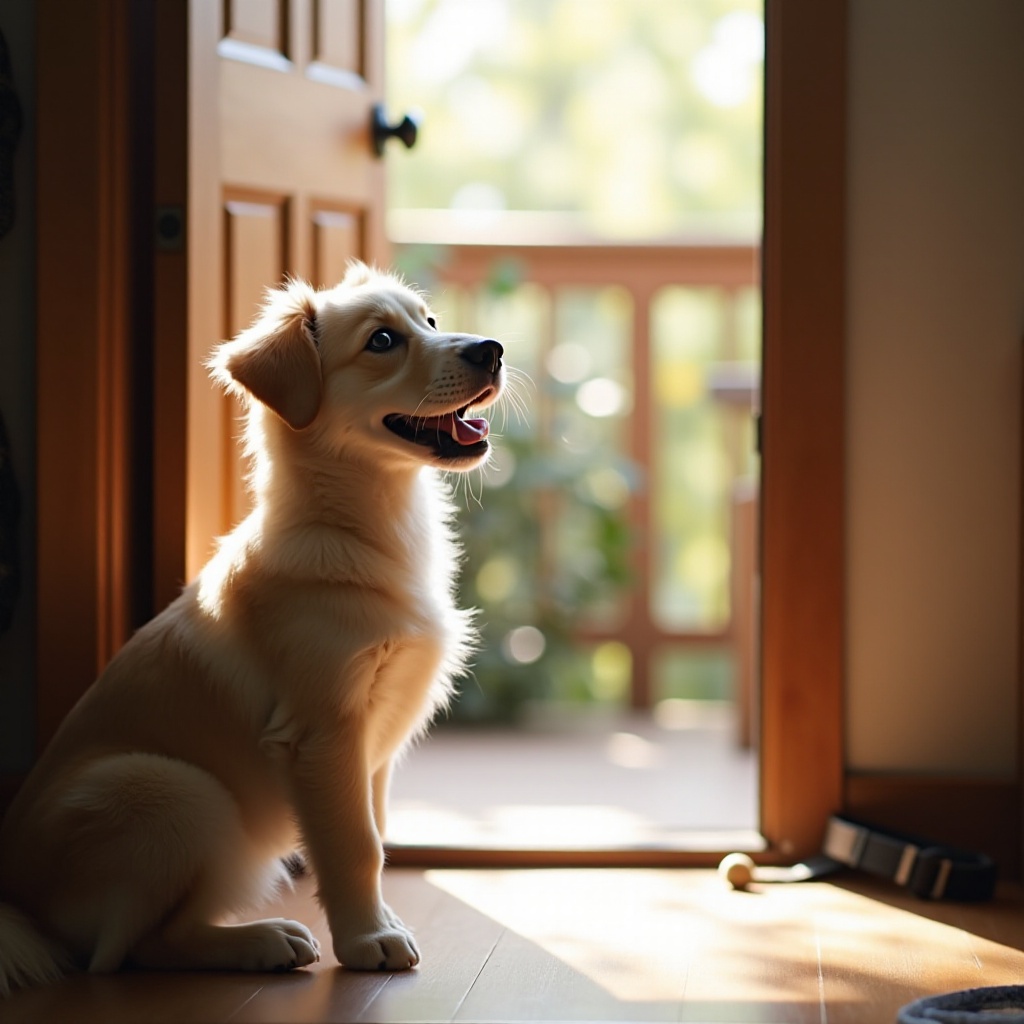Introduction
Does your dog whine to go outside but then refuses to potty? This behavior can be confusing and frustrating for dog owners. Many underlying reasons can cause this type of behavior in dogs, ranging from behavioral issues to environmental factors. This article aims to help you understand the possible reasons behind your dog’s whining and offers actionable tips to address the issue.
Let’s delve into the common reasons dogs exhibit this behavior and how to identify and modify these traits adequately.

Common Reasons Dogs Whine but Don’t Potty
Understanding why your dog whines to go outside but doesn’t relieve itself can help address the issue effectively. Here are some common reasons for this behavior:
- Distractions: Your dog might be distracted by other stimuli outside, such as noises, scents, or people, making it hard for them to focus on pottying.
- Behavioral Issues: Sometimes, dogs whine to go out due to anxiety, boredom, or seeking attention.
- Medical Conditions: Issues like urinary tract infections, gastrointestinal problems, or other health concerns can lead to this behavior.
- Training Inconsistencies: If your dog hasn’t been properly trained or there’s been a lapse in training, it might not understand when or where to potty.
Identifying the root cause is crucial for addressing and modifying the behavior effectively. The next section will discuss some behavioral traits to look out for that can help pinpoint the exact issue.

Behavioral Traits to Look Out For
Recognizing certain behavioral signs in your dog can aid in identifying why they might be whining to go out without needing to potty. Here are a few behavioral traits to observe:
- Attention-Seeking Behavior: Notice if your dog whines more when you are engaged in another activity or when it wants to play. This could indicate that it’s seeking attention rather than needing to go out.
- Anxiety and Stress: Watch for signs like pacing, excessive barking, or destructive chewing. These behaviors often accompany whining and suggest that your dog might be anxious or stressed.
- Restlessness: A dog that appears unable to settle down or frequently goes to the door might be expressing a need for exercise or mental stimulation rather than a need to potty.
- Physical Discomfort: If your dog repeatedly squats but doesn’t produce, or if it appears in pain, it could be a sign of an underlying medical issue.
Understanding these behaviors will guide you in making necessary changes in training and routine, which will be discussed in the next section.
Training and Behavioral Modifications
Addressing the whining behavior often requires a combination of training techniques and behavioral modifications. Here are some strategies to help:
- Create a Consistent Routine:
- Establish regular potty times, especially after meals, playtime, and naps.
-
Stick to a consistent schedule to help your dog understand when it’s time to potty.
-
Limit Attention-Seeking Behavior:
- Ignore your dog when it whines for attention and only give attention for appropriate behavior.
-
Reward calm behavior and pottying in the right place with treats and praise.
-
Use Leash Training:
- Take your dog out on a leash to the designated potty area and restrict its movement to help it focus on the task.
-
Give it time, but if it doesn’t potty within a few minutes, bring it back inside and try again later.
-
Positive Reinforcement:
- Reward your dog immediately after it potties outside. Use high-value treats and positive verbal reinforcement.
-
Avoid punishing your dog for accidents indoors, as this can create anxiety and worsen the behavior.
-
Reduce Distractions:
- Find a quiet, less stimulating area for your dog to potty.
- Keep the same spot for consistency, so your dog knows that this is the potty area.
By implementing these strategies, you should see a gradual improvement in your dog’s behavior. However, there are instances where professional help might be necessary.

When to Seek Professional Help
There are situations when professional assistance is required to address your dog’s behavior.
- Persistent Whining: If your dog’s whining persists despite consistent training efforts, it might be a sign of a deeper behavioral issue.
- Health Concerns: Consulting a vet is crucial if you suspect that your dog has any medical problems causing the behavior.
- Professional Training: Sometimes, enlisting the help of a certified dog trainer or behaviorist can provide tailored strategies for managing and correcting the behavior effectively.
Seeking professional help ensures that your dog gets the appropriate training and care, addressing any underlying issues.
Conclusion
Understanding why your dog whines to go out but doesn’t potty is the first step in addressing the behavior. By recognizing common reasons, observing behavioral traits, and implementing effective training strategies, you can help your dog develop better potty habits. Always consider seeking professional help if the behavior persists or if you suspect a medical issue. A consistent and caring approach can significantly improve your dog’s behavior and well-being.
Frequently Asked Questions
Why does my dog whine to go out but not pee?
Your dog might be distracted, anxious, seeking attention, or experiencing health issues such as urinary tract infections.
How can I train my dog to stop whining for no reason?
Create a consistent routine, use positive reinforcement, ignore attention-seeking behavior, and reduce distractions.
When should I consult a vet if my dog’s whining persists?
Consult a vet if the whining continues despite training efforts or if you suspect an underlying medical condition.
